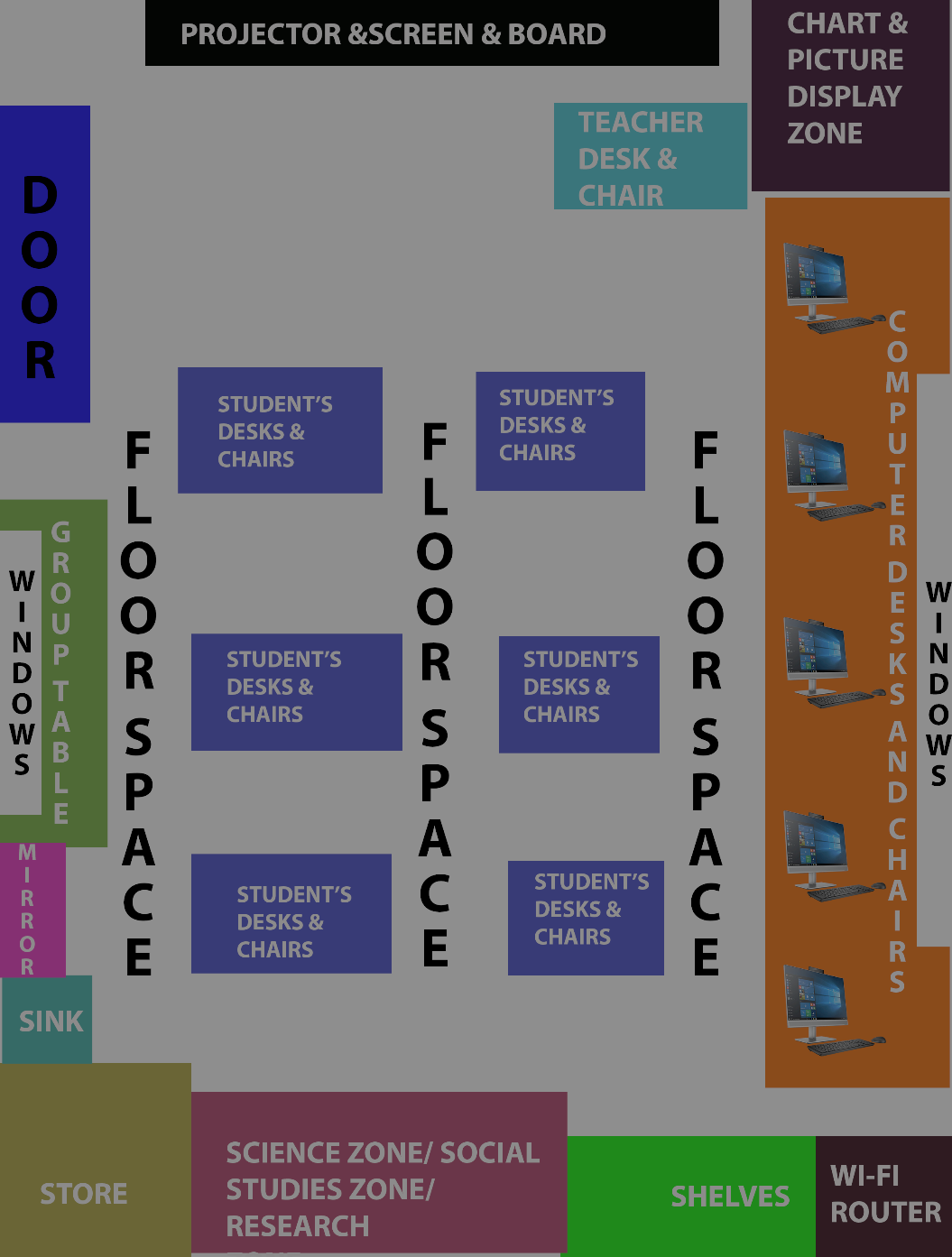
The objects in the learning classroom have been chosen carefully and arranged to ease a better learning environment for developing childhood students. There is enough walking space needed to help the students walk around in the classroom. Students’ desks and chairs are under proper spacing conditions to facilitate communication and build relationships during class interactions (Gkloumpou & Germanos, 2020).
The teacher can sit at his desk and have better eye contact with the students. The windows allow the classroom to be well-lit, and thus there are reduced accident cases. The chart and display zone enable the students to watch pictures that are fundamental to their learning process. Computer tables are arranged on the classroom margins to help online research from the young students. Science and social studies zones are essential for equipping childhood students with proper skills and knowledge. The store is necessary for the storage of critical learning materials which can not fit on the shelves. The sink is significant for students washing hands after participating in science classes like modeling using clay.
The nurturing of diversity, creativity, openness, and socially interactive learning is essential for inquiry-based learning in young students. A teacher can foster diversity by maintaining consistent communication with the students to improve their communication with counterparts (Gkloumpou & Germanos, 2020). Every student should be acknowledged and respected by the teacher to foster diversity. The teacher needs to understand and recognize each childhood student’s culture. Creativity requires the teacher to encourage new skills from childhood students. Online research at a computer desk or through daily practical lessons at the science and social studies zone helps improve the students’ creativity.
The promotion of a socially interactive environment requires the teacher to promote more teamwork among the childhood students. An interactive environment builds the spirit of openness between the learners and the teacher. The group table or the science and social studies zone facilitates the interaction. There is also a need to develop active listening from the students by the teacher.
A classroom environment encouraging inquiry, dynamic problem-solving, discovery, and linking with the natural world is crucial for the development of the students. Internet search facilitates discovery that helps childhood students to collect new important information online (Erdemir & Yangın, 2019). The shelves may contain various science and social studies-related materials like rocks and plants, which may evoke the spirit of inquiry from childhood students.
The teacher needs to carefully answer the arising questions from the learners based on the observations in the learning environment. The spacing of the learners’ desks in the learning environment facilitates good interaction between the students, which may be necessary for problem-solving. The social studies and science corner may contain essential materials to develop new ideas in the learners’ minds. The charts displayed on the walls may have new information to induce a spirit of query among the learners. The mirror in the class can help improve the learners’ self-awareness and boost their understanding of body language and emotions.
A correctly designed classroom is vital in building the students’ attention, engaging the students, and meeting the needs of the learners. The class should satisfy both the social and psychological needs of the young learner. The classroom builds a good interaction among the students, which is essential in meeting the needs of the learners (Ahmad et al., 2017). The proper lighting and aeration in a well-designed classroom improve the level of attention among the learners.
There is enhanced teacher-student communication in a well-designed classroom. Knowledge flows better in a properly designed classroom as everything is in its appropriate strategic position. There is upgraded inquiry-based learning in a well-designed, and thus learners understand better in class. The materials in the classroom like mirrors, shelves, display pictures, and computers can help childhood learners discover how they can learn best. The classroom materials encourage the students to participate in the learning process facilitated by the teacher actively.
References
Ahmad, C., Shaharim, S., & Abdullah. (2017). Teacher-student interactions, learning commitment, learning Environment and their relationship with student learning comfort. Journal of Turkish Science Education, 14(1), 57–72. Web.
Erdemir, N., & Yangın, G. (2019). The perceptions of student teachers about using an online learning environment “edmodo” in a “flipped classroom.” SDU International Journal of Educational Studies, 6(2), 174–186. Web.
Gkloumpou, A., & Germanos, D. (2020). The importance of classroom cooperative learning space as an immediate environment for educational success. An action research study in Greek Kindergartens. Educational Action Research, 1–15. Web.
